adopt a water station
your $1,000 donation supports a water station for one year
Adopt The Gurupreet KaUR Station
-
Available for Adoption
This special Organ Pipe station is dedicated to the memory of six-year old Gurupreet Kaur. On June 12, 2019, migrant traffickers led Gurupreet, her mother, and three other Indian nationals across the border into a very remote area west of Lukeville, AZ, leaving them there. Very quickly the situation grew dire as the heat reached 108 degrees. The group decided that Gurupreet's mom and a second woman should go find help, but the five would never reunite. Later that same day, Gurupreet died of heat stroke. Border patrol agents found her body just 22 hours after the grouped crossed the border into the U.S.
Like so many other asylum seekers, Gurupreet's parents were seeking a safer and better life for their daughter. They made an extremely hard decision that so many of us living out our comfortable lives in the U.S. will never have to make. In a statement released by the nonprofit Sikh Coalition, Gurupreet's parents said, “We trust that every parent, regardless of origin, color or creed, will understand that no mother or father ever puts their child in harm’s way unless they are desperate.”

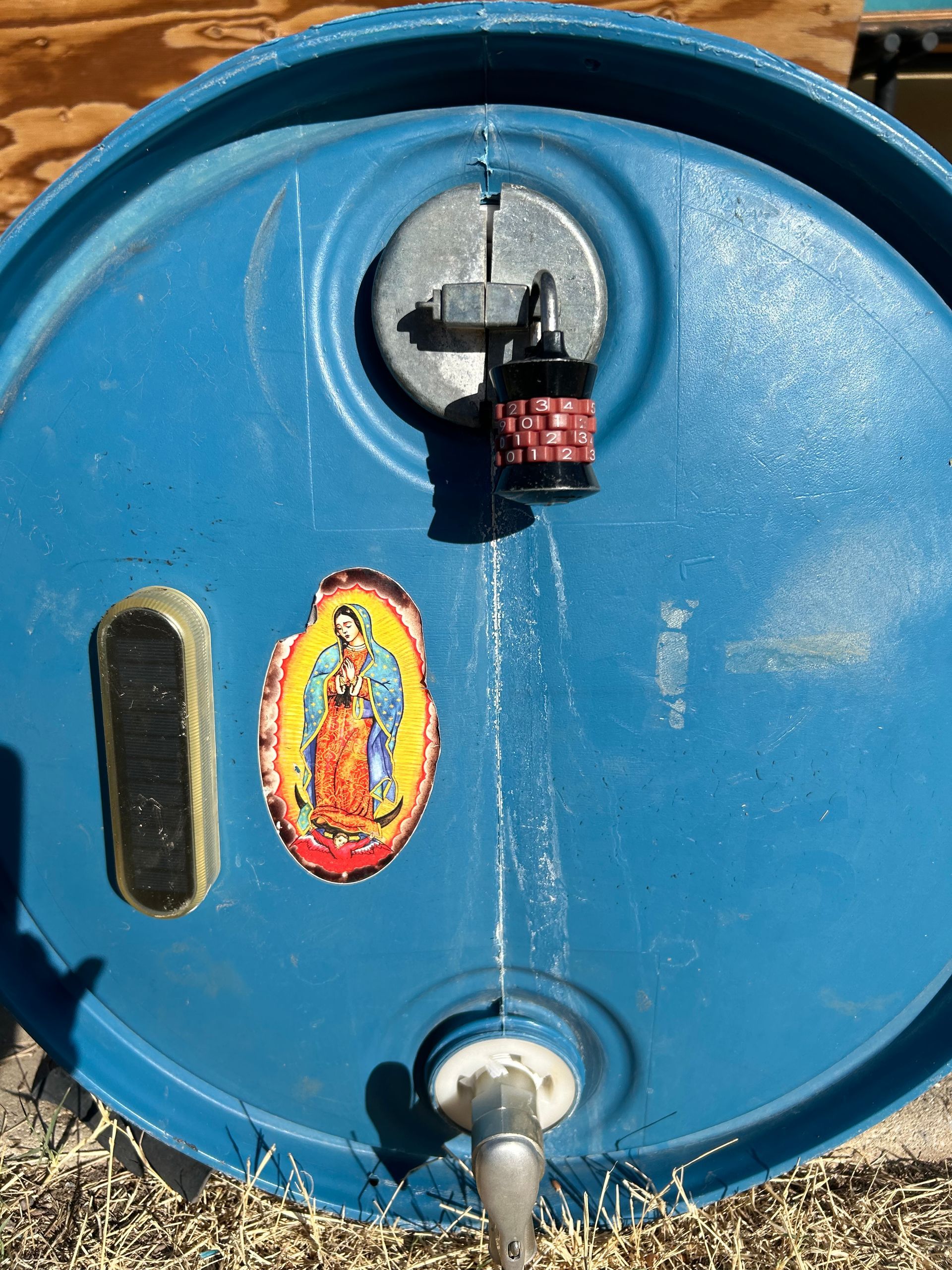
Adopt The Sister Elizabeth Station
-
Adopted by Vauna Pipal - thank you!
This water station is named after Sister Elizabeth, or Sister Kizzie, to those who knew her best. Sister Kizzie, now passed, was beloved by everyone who knew her and has gone down as a legend in the Tucson border community. One of the founders of Humane Borders, she met with other concerned members of the Tucson faith community in 2000 to address what should be done about the growing number of migrant deaths in the Arizona Sonoran Desert. It was decided that life-saving water supplies should be placed at strategic sites where migrants were dying in the desert, and Humane Borders was born. As her obituary reads, "Whether dealing with Border Patrol, judges, immigration officials, or critics of [Humane Borders], she spoke with confidence and strength. In 2010, Humane Borders recognized Sister Elizabeth as Volunteer of the Decade.
Adopt the Green Valley Station
-
Available for Adoption
Green Valley Station is one of a group of stations we service on our Arivaca water run. Our most easterly station, it is situated on private property near a pecan grove on the banks of the Santa Cruz. Green Valley Station is also our most urban station, but surprisingly sees a great degree of migrant activity. The area is also home to a good number of whitetail and mule deer. According to one longtime volunteer, it is seldom that volunteers don't see a dozen or more deer when servicing the station.
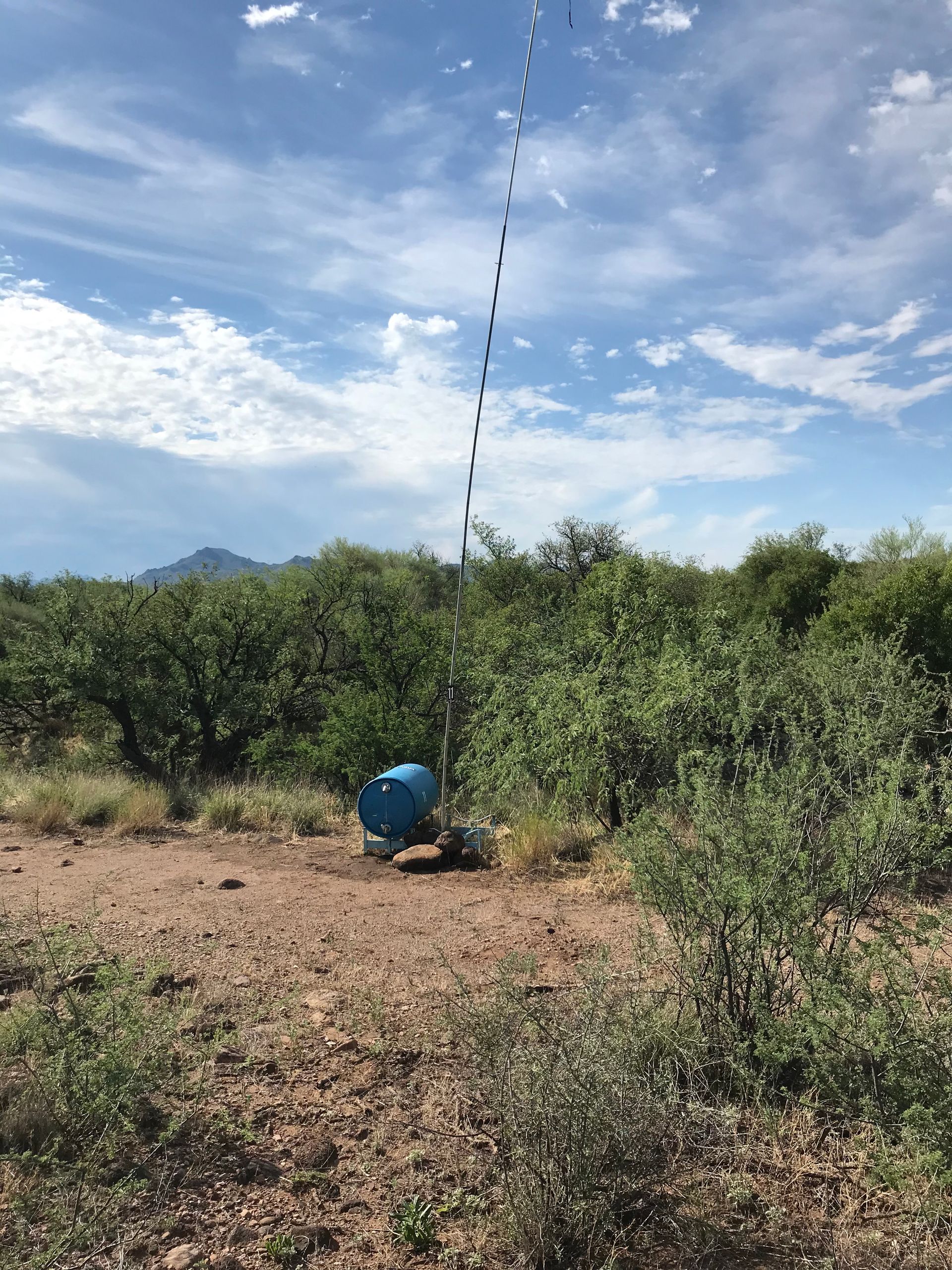
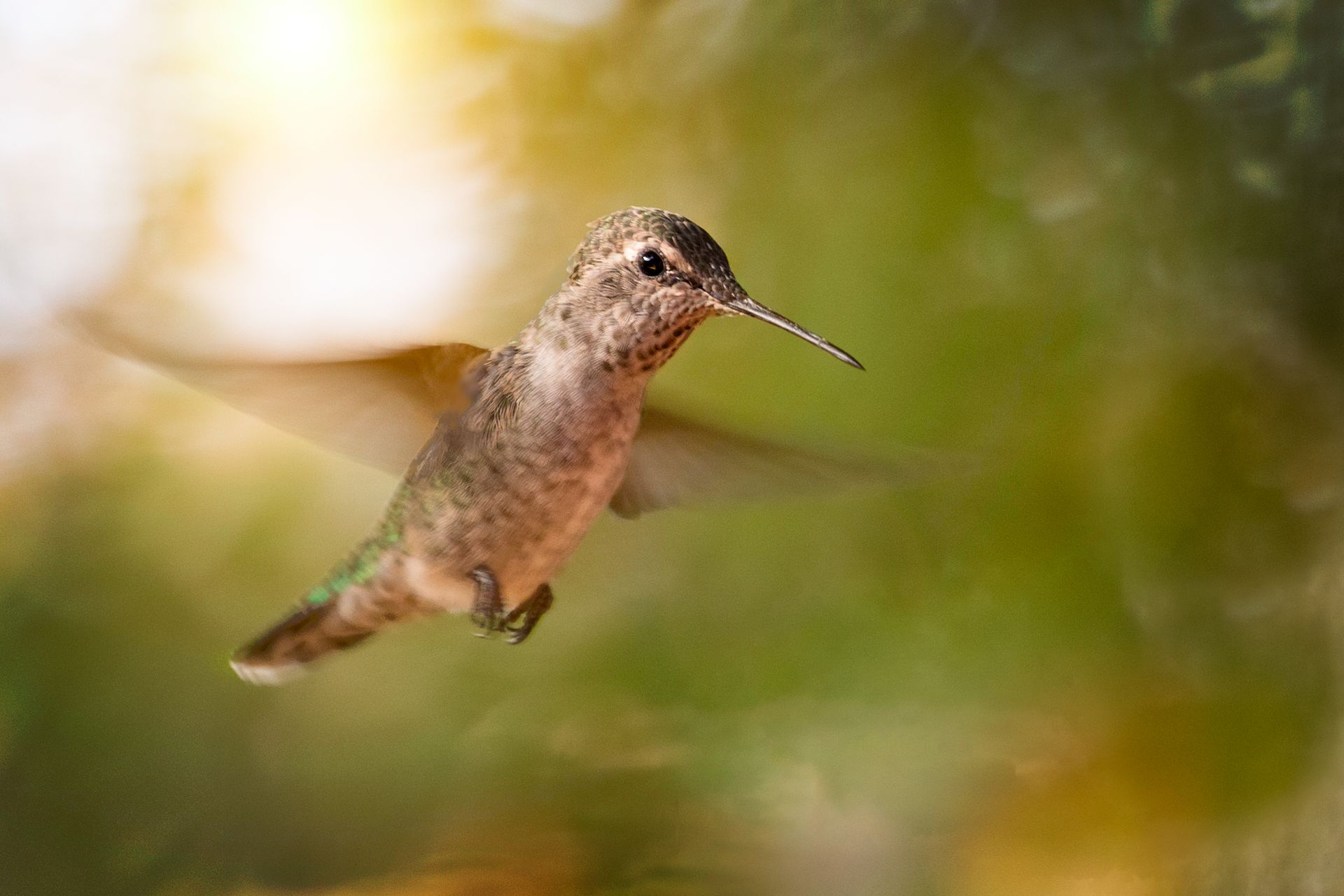
Adopt The Hummingbird Station
-
Adopted by Ryan McIntyre - thank you!
This remote water station is situated in rough and rocky terrain on the edge of Brawley Wash, between Pima County land and the Buenos Aires National Wildlife Refuge where migrants are known to cross.
Hummingbird Station is dedicated to a long-time beloved volunteer, now passed, who was active in the Tucson border community for more than 20 years, and who served as a bridge and liaison between different Tucson desert humanitarian organizations. She will never be forgotten.
PHOTO CREDIT: Osha Gray Davidson
Adopt the Rocky Road Station
-
Available for Adoption
At one time, the road to Rocky Road Station was very difficult to traverse as the road we had to take to get there was made up of good-sized rocks. It was more of a big stone wash than a road! Today, during dry season, it's easier to drive as most of the larger rocks have been removed and the road is less bumpy. The image that you see here is taken from our water station, facing south towards "Rocky Road."
Unfortunately, because the road has become easier to navigate, Rocky Road Station has also become more vulnerable to vandals. Two or three times a year we will come upon the flagpole and water barrels destroyed. We waste no time rebuilding the station to ensure that precious water is available to migrants crossing.
PHOTO CREDIT: Stephen Lee Saltonstall


Adopt the Reyes-Carillo Station
-
Available for Adoption
The Reyes-Carillo Station is dedicated to a young woman immigrant from Guatemala. In the 1980s, Mima Reyes fled the land of her birth amid the violence of U.S.-backed dirty wars that plagued her country. Mima's journey crossing the border into the U.S. was a long, painful ordeal, but once in the U.S., with the help of a generous benefactor and an immigration attorney, she was able to get the proper documentation.
Mima will always hold a special place in the heart of Vice-Chair Bob Feinman. Mima cared for Bob's terminally ill mother, staying with her until the time of her death, going on to care for his aging father. In 2009, Humane Borders dedicated this water station to Mima and the Reyes-Carillo family.
Adopt the cemetery hill station
-
Adopted by Norman Gennaro - thank you!
Cemetery Hill, near Arivaca, is the site of an old homestead cemetery from the early 1900s. It's also one of the most challenging areas that we drive, involving an incredibly steep climb up and down a 4WD road that's been plagued by erosion over the years.
From the top of Cemetery Hill is a panoramic view of the Altar Valley, though the beauty belies just how dangerous this area is for people crossing.
Humane Borders driver Kirk Astroth penned a poignant essay about Cemetery Hill that describes the area and his thoughts about the important role Humane Borders plays in working to prevent migrant deaths.
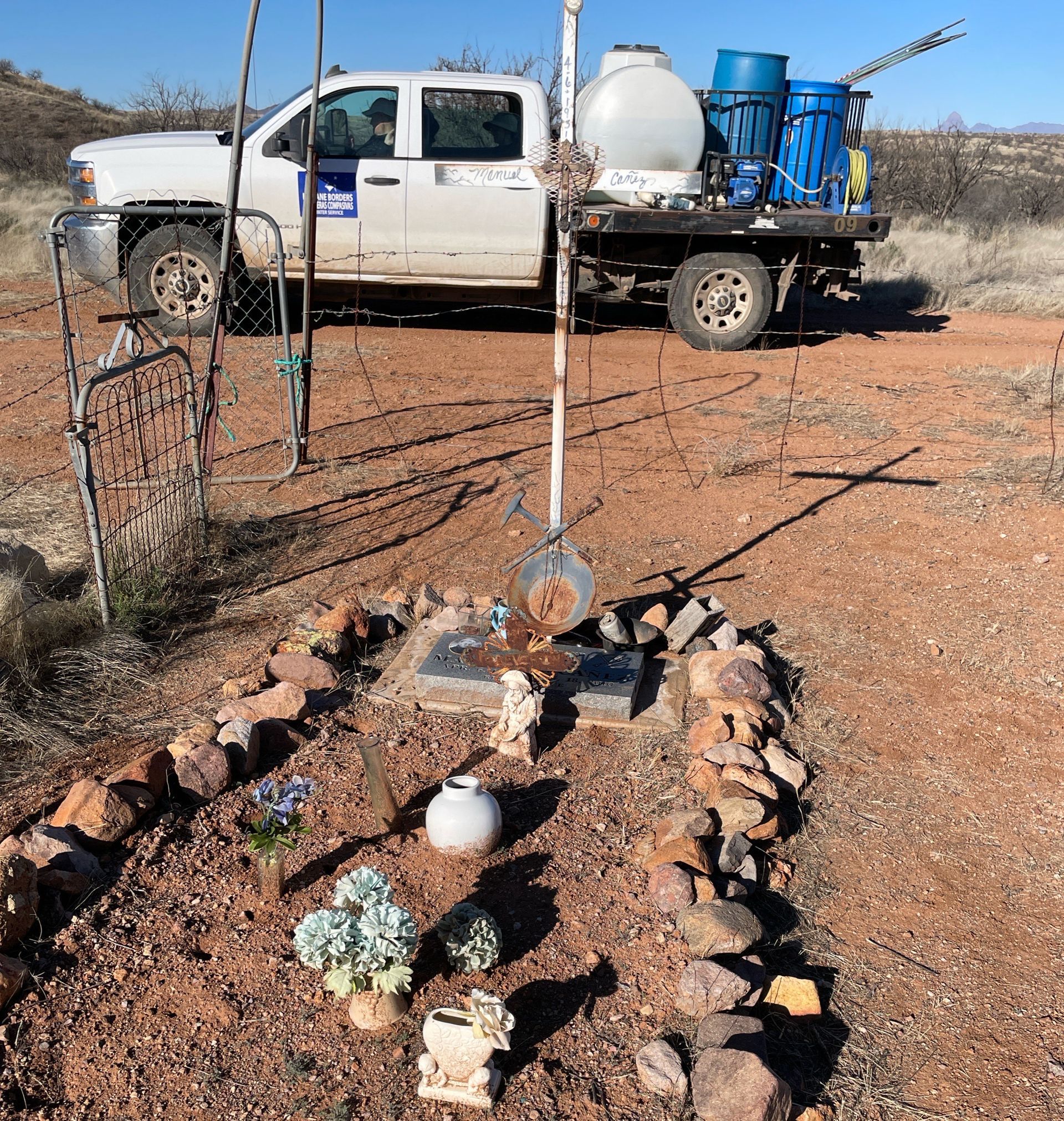
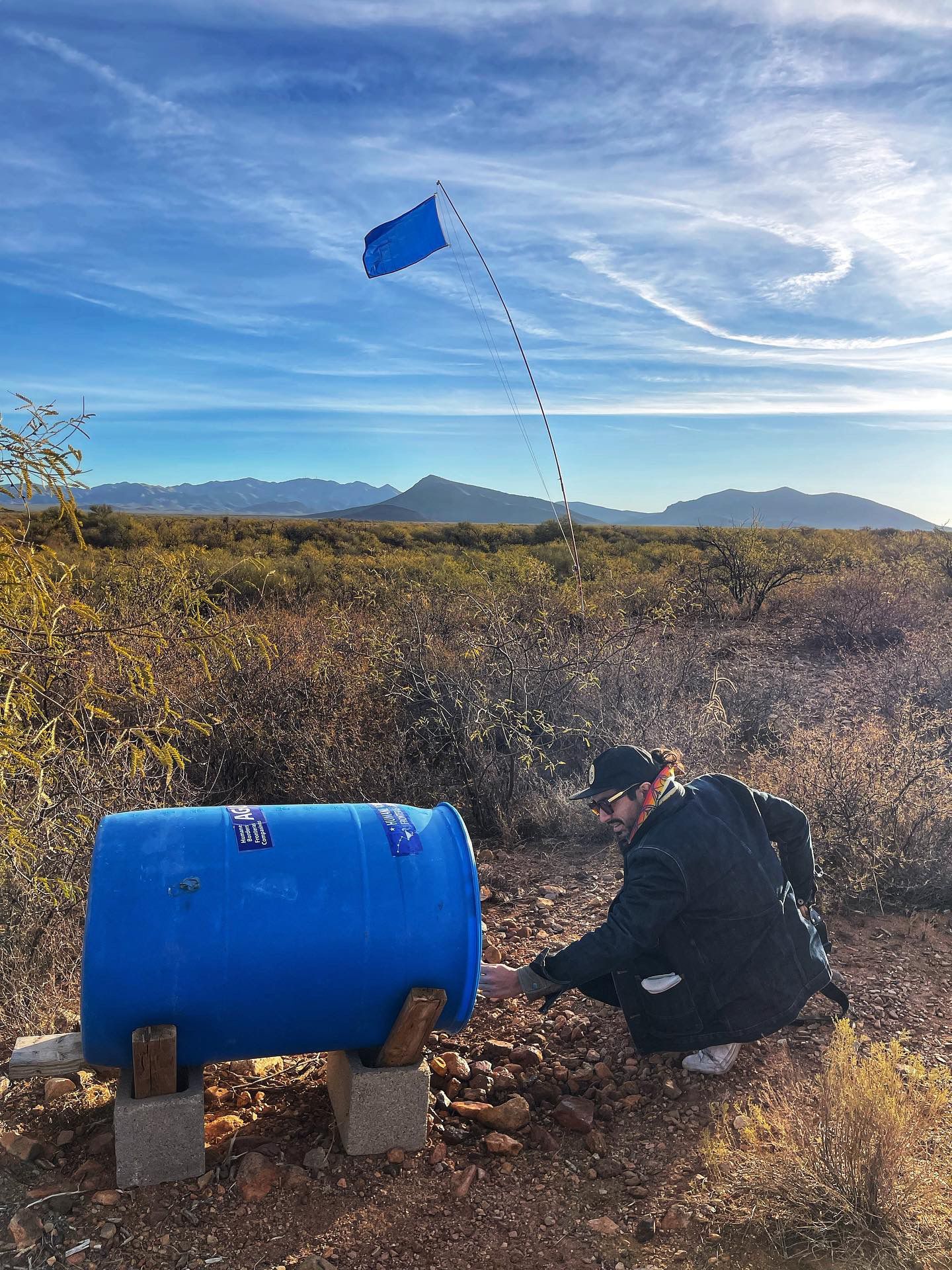
adopt the Bishop Carcaño station
-
ADOPTED BY LAURIE PIEPER - THANK YOU!
North of the Arizona/Mexico border near the Sasabe Highway (286), this station prevents migrant deaths from dehydration. It also helps reduce the risk of people drinking unsafe water from cattle tanks at Altar Valley ranches.
In 2007, the station was dedicated to honor Bishop Minerva Carcaño, the first Hispanic woman appointed as a district superintendent of the United Methodist Church in the U.S., and the first Hispanic female elected bishop. Bishop Carcaño is well known for her commitment to ministering immigrants and refugees on the U.S./Mexico border.
Under Carcaño’s leadership, the United Methodist Church Relief Fund (UMCOR) granted Humane Borders funds for the purchase of two water trucks to service locations in the Arizona Sonoran Desert.
Humane Borders honors Bishop Carcaño’s advocacy efforts for the untold number of thirsty migrants crossing dangerous desert lands in search of life and hope.
adopt the tim holt station
-
adopted by deirdre roney and john cadarette - thank you!
Located between two washes, the Tim Holt station provides water in a remote area of the Ironwood National Monument about 70 miles north of the border. The area is graced by several species of hardy desert plants, including saguaro cactus, ocotillos, ironwoods, palo verdes, and chollas.
The station is named for longtime Humane Borders volunteer and treasurer Tim Holt, who is credited with rescuing a migrant woman he found near death near one of our stations. Holt called Border Patrol and cooled the woman while awaiting the arrival of a rescue helicopter, an action that likely saved her life.
In an interview after the event, Holt said, "The general public has no idea what's going on and they need to know." His compassionate action embodies what Humane Borders is all about.
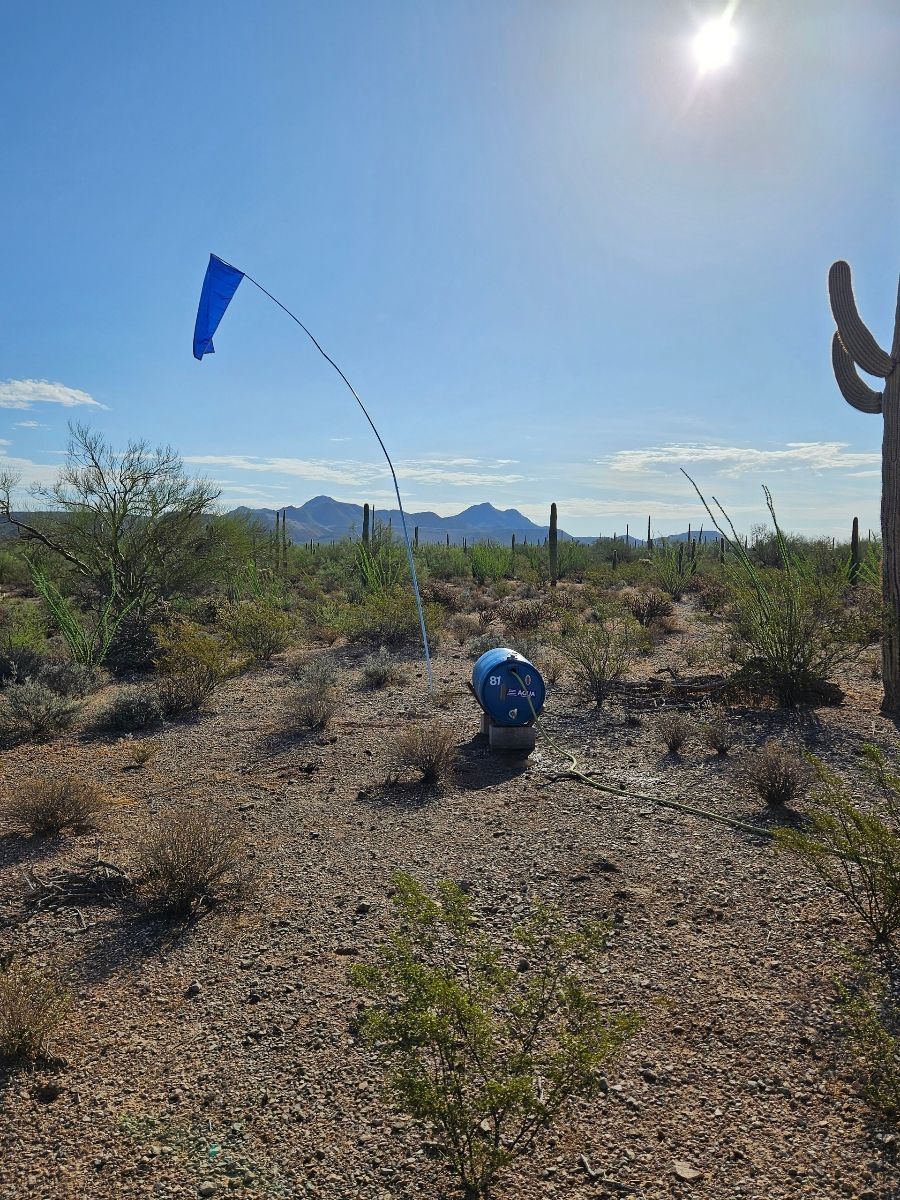
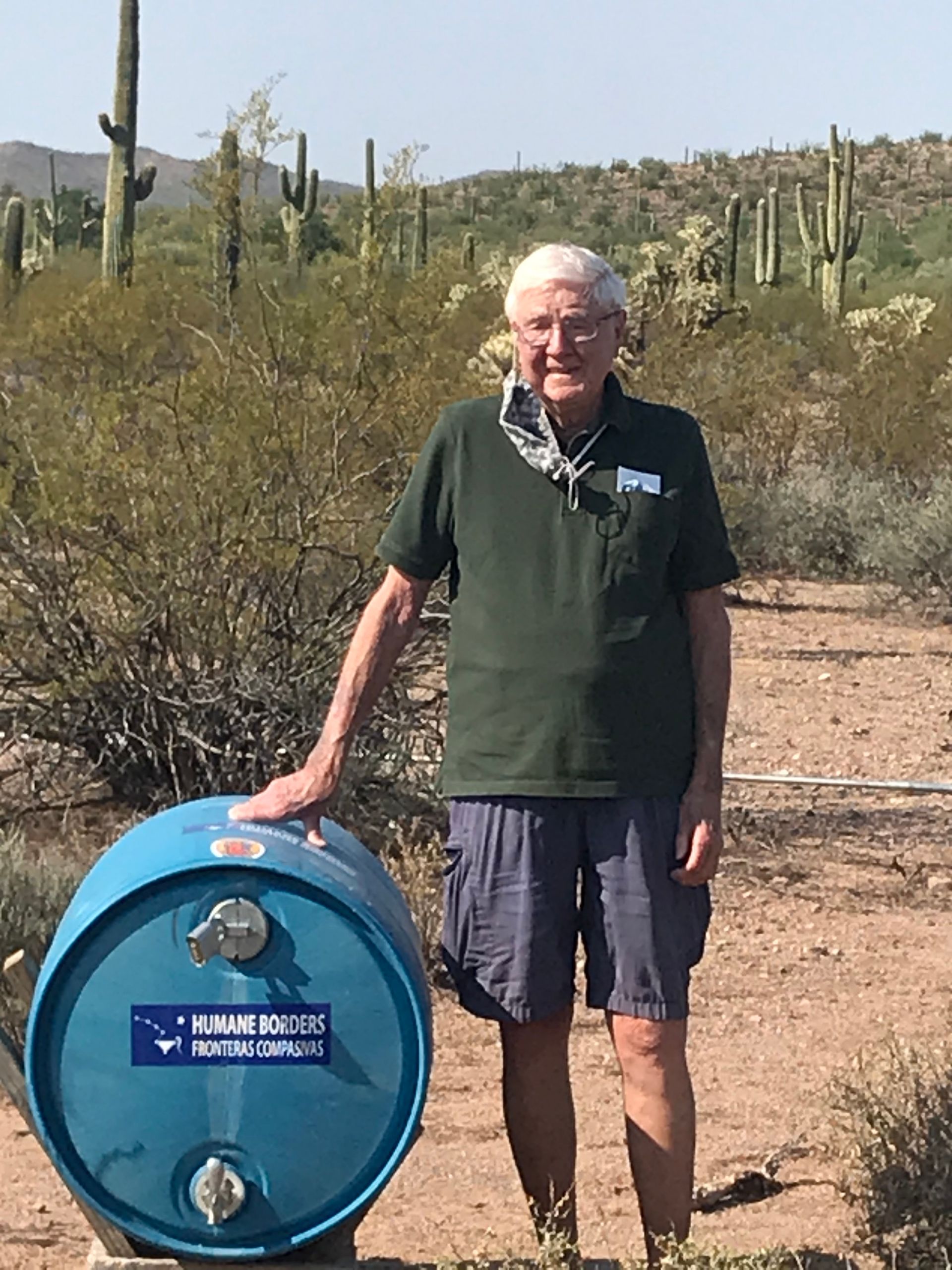
Adopt the ed McCullough Station
-
Adopted by Dale and Leanna Rublaitus- Thank you!
Established on Pima County property, the Ed McCullough Station is situated on the fringe of the Ironwood National Monument in hauntingly beautiful but desolate mountainous desert terrain.
The McCullough Station is one of a special group of stations named after the people who are all about the heart and soul of the work that we are here to do: saving lives. Starting in 2002, Ed McCullough started producing maps in a project that would encompass more than six years of walking migrant trails and hundreds of hours of meticulously mapping nearly 4,000 miles of migrant trails on GPS systems.
McCullough’s work has contributed to the work that we do at Humane Borders as reflected by the stark red dots found on our death maps. From 2003 to 2018, McCullough worked in partnership with the Pima County Medical Examiner’s Office to map the GPS coordinates where recovered human remains were found.
adopt the gene buell station
-
Adopted by Dr. Raul Rodriguez - thank you!
Our Gene Buell Station was named after a dedicated Humane Borders driver who took trips out for us for more than 15 years. Gene had worked as a surveyor, and he loved spending time in this part of the desert where migrants were known to cross. It was Gene who came up with the idea for our cinderblock and wood barrel stands.
Gene Buell is one of three water stations that we maintain on Ironwood Monument lands, but unlike the other two Ironwood stations we service, Gene Buell is a lonely station situated on a vast floodplain where, as our Operations Manager Joel Smith so aptly puts it, "You can see forever." Standing at the station, volunteers can glimpse Baboquivari Peak to the south and Picacho Peak to the north.
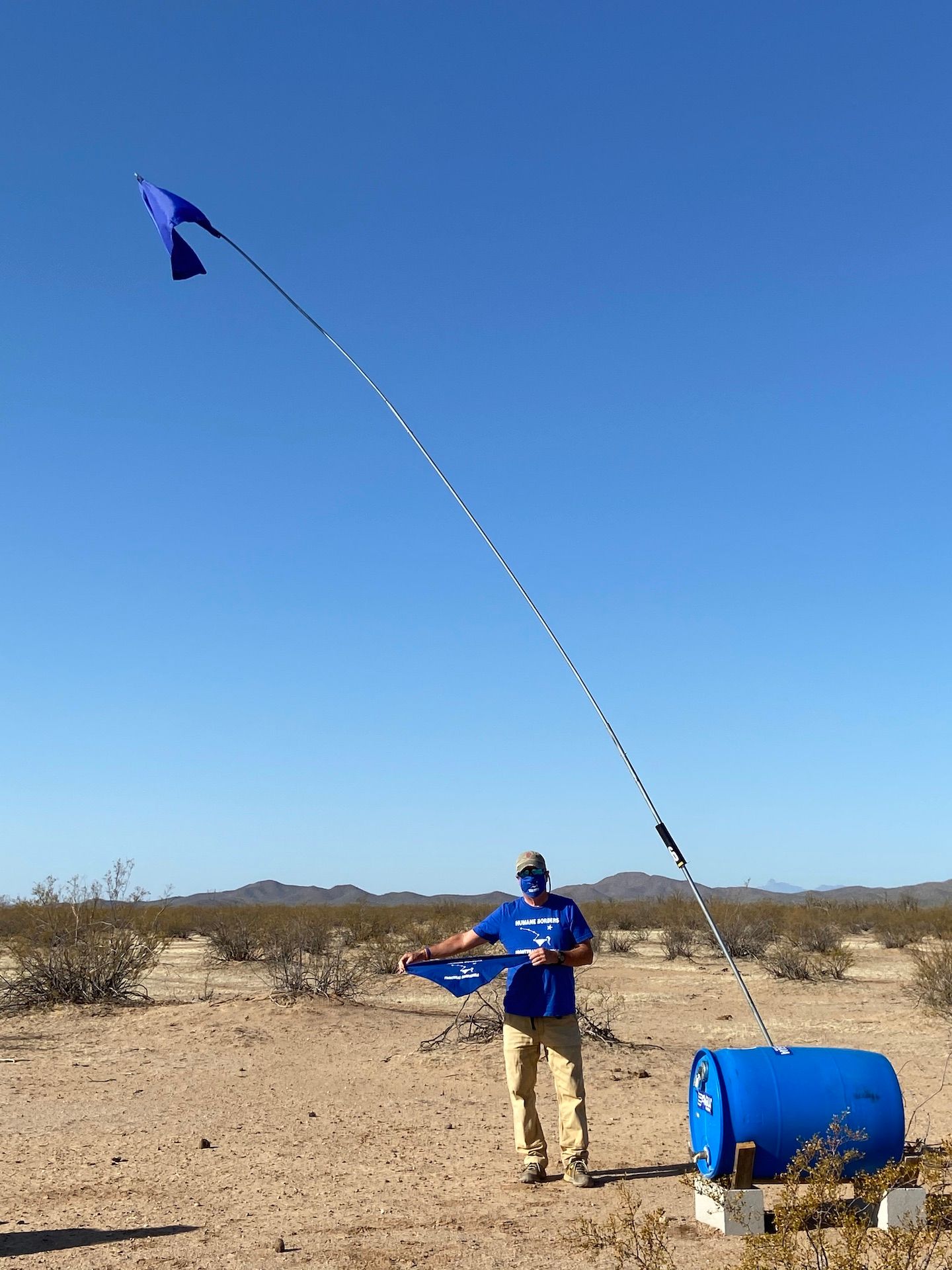
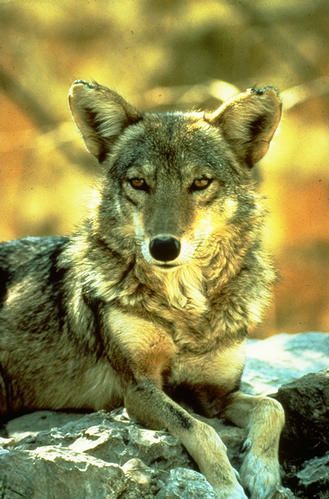
Adopt Whispering Coyote Station
-
Adopted by Anonymous - thank you!
Whispering Coyote is one of seven water stations we maintain on City of Tucson lands where migrants cross. The station gets its name from an incident that occurred at the site on a water run back in 2019. Peculiarly, as the volunteers were checking the station's water levels, Truck 5 suddenly locked her own doors. Because there was a problem with the truck that necessitated leaving the engine running, the driver and volunteers were locked fast out.
After calling Triple A, the driver and a volunteer walked to the paved road to wait for the truck to arrive. As they stood, a large dog from a nearby property noticed them and was rapidly approaching. Suddenly, a coyote was heard in the distance. The moment was suspended in time as the three stood still listening, the two volunteers from their positions, the dog from a good hundred yards away as the coyote let out a long, mournful wail. The dog turned tail and ran after the coyote, allowing one of the volunteers who was fearful of the dog a safe exit back to the truck.
adopt the ross mine station
-
Adopted by Sandi and Jenn - thank you!
True to its name, the Ross Mine station is near a long-abandoned mine in southern Arizona near Arivaca. This station is located in a lush riparian area of the Buenos Aires National Wildlife Refuge, and is one of the more challenging stations to access, with mud, deep ruts, and low-hanging trees all putting our drivers to the test.
The site is next to a wash that has served as a migration route over the years through hostile terrain and thornscrub.
The rosary shown here was hung in a tree by a Humane Borders volunteer who hoped it would serve as a source of comfort and inspiration for those on their long journey.
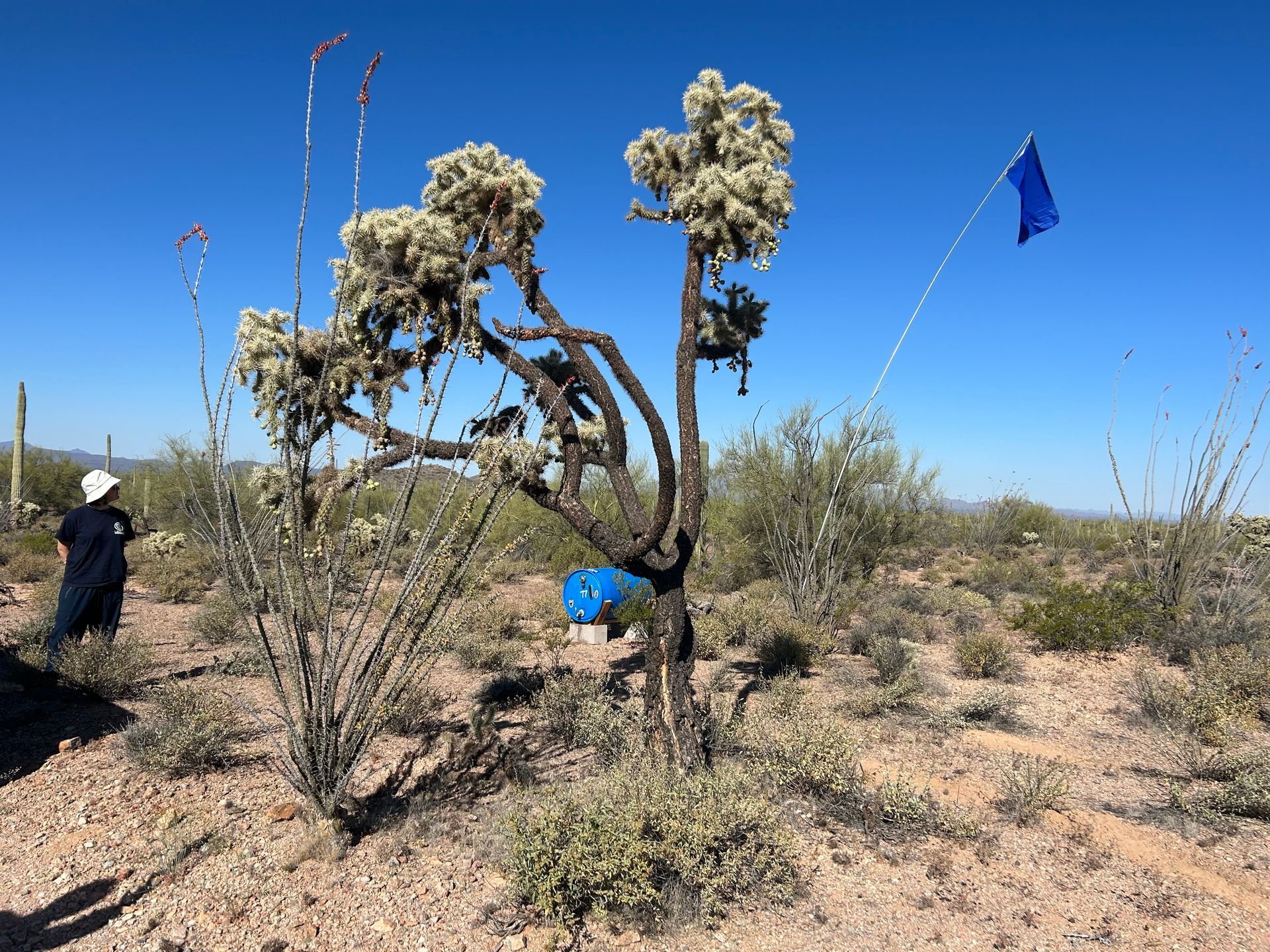
ADOPT the Silver bell Station
-
Adopted by Disciples Women's Ministries (DWM) - thank you!
This is one of three stations that Humane Borders maintains in the Ironwood Forest National Monument northwest of Tucson. Situated near the Silver Bell and Waterman Mountains, the monument encompasses nearly 300 square miles of Sonoran Desert. Carbon dating suggests some of the ironwood trees have survived more than 800 years.
Our Ironwood water stations are situated in some of the most beautiful landscapes in Southern Arizona. But for crossing migrants, this rugged, desolate landscape is harsh and unforgiving. Since 1991, 153 migrants have perished in this area. This is why Humane Borders is committed to maintaining its stations here--to prevent more migrant deaths.
adopt the figueroa Station
-
Adopted by Anonymous - Thank You!
The Figueroa water station is in an elevated section of the Altar Valley, north of Arivaca. At the end of a dirt road, access to Figueroa can be tricky, requiring a steady climb while in 4 WD up a rocky road that winds through a grove of desert ocotillo.
During the summer rains, drivers must navigate around a large mud puddle that collects on a low section of road. There is a beautiful view of Baboquivari Peak from this station, though the beauty belies the sad reality that this area is among the deadliest for migrants in southern Arizona.
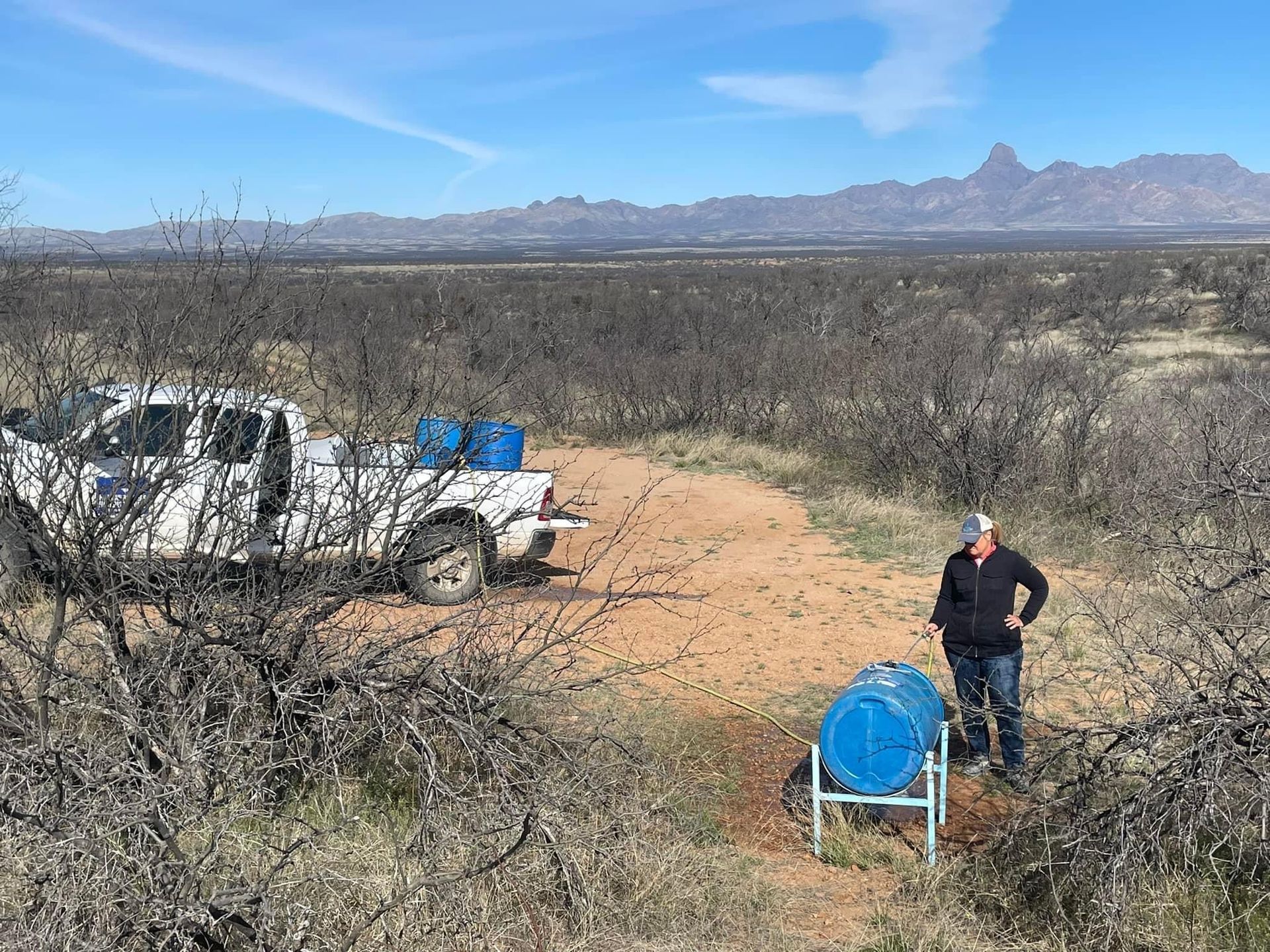
ADOPT THE DRIPPING SPRINGS STATION
-
ADOPTED BY CAROLE DAUGHTON - THANK YOU!
The Dripping Springs station lies near an outcrop of rough desert stone in the Organ Pipe Cactus National Monument near Lukeville, Arizona. The entire area looks ancient and volcanic, including the tall mountain immediately to the southwest. To the west, this dark, stony land falls away to a vast desert valley that appears endless. It must feel endless for someone trying to cross it. In spite of its name, the Humane Borders barrel is the only consistent water source at Dripping Springs, a scenic but deadly area.
ADOPT THE senita basin Station
-
ADOPTED BY ANONYMOUS - THANK YOU!
Our Senita Basin station is in a basin or depression in the Organ Pipe Cactus National Monument near Lukeville, Arizona. The small basin is filled with organ pipe and senita cactus, as well as a myriad of other native desert plants. The senita cacti are long and armless and sometimes have "hair" or "beards" on their tips.
On one water run, we found a black one-gallon water jug under the spigot of the barrel. We felt certain our arrival had interrupted someone getting water. We left the jug behind so this person could resume filling it and continue on their journey. Now, every time we visit the station, we wonder what happened to the traveler who left the jug behind.
ADOPT THE RED TANKS STATION
-
ADOPTED BY ANONYMOUS - THANK YOU!
The Red Tanks station is near the loop drive through Organ Pipe Cactus National Monument near Lukeville, Arizona. Since there are no vehicles allowed off the main road, we hike on foot with a long drinking-water-safe hose to replenish our barrel, traveling across a wash and around a fallen ocotillo.
Hikers and tourists often see the Humane Borders water truck and are curious about what we're doing, stopping to talk with us. Everyone we've encountered is supportive of our mission and one person gave us a cash donation on the spot. Our water is for everyone!
ADOPT THE kim johnson STATION
-
ADOPTED BY ANONYMOUS - THANK YOU!
Named in memory of a beloved Humane Borders volunteer, the Kim Johnson water station is in the Altar Valley off the Sasabe Highway (286). This is an area where, sadly, many people have died over the years, in the shadow of the Baboquivari Mountains.
To access the station requires maneuvering through a dense grove of thorny trees (which leave "Arizona pinstripes" on the sides of our vehicles), and around a large mudhole that forms after it rains. This station is also known for a large sandpit on approach to the barrel, that can present a challenge for even the most experienced drivers. We're committed to bringing water to the desert even under these challenging conditions.
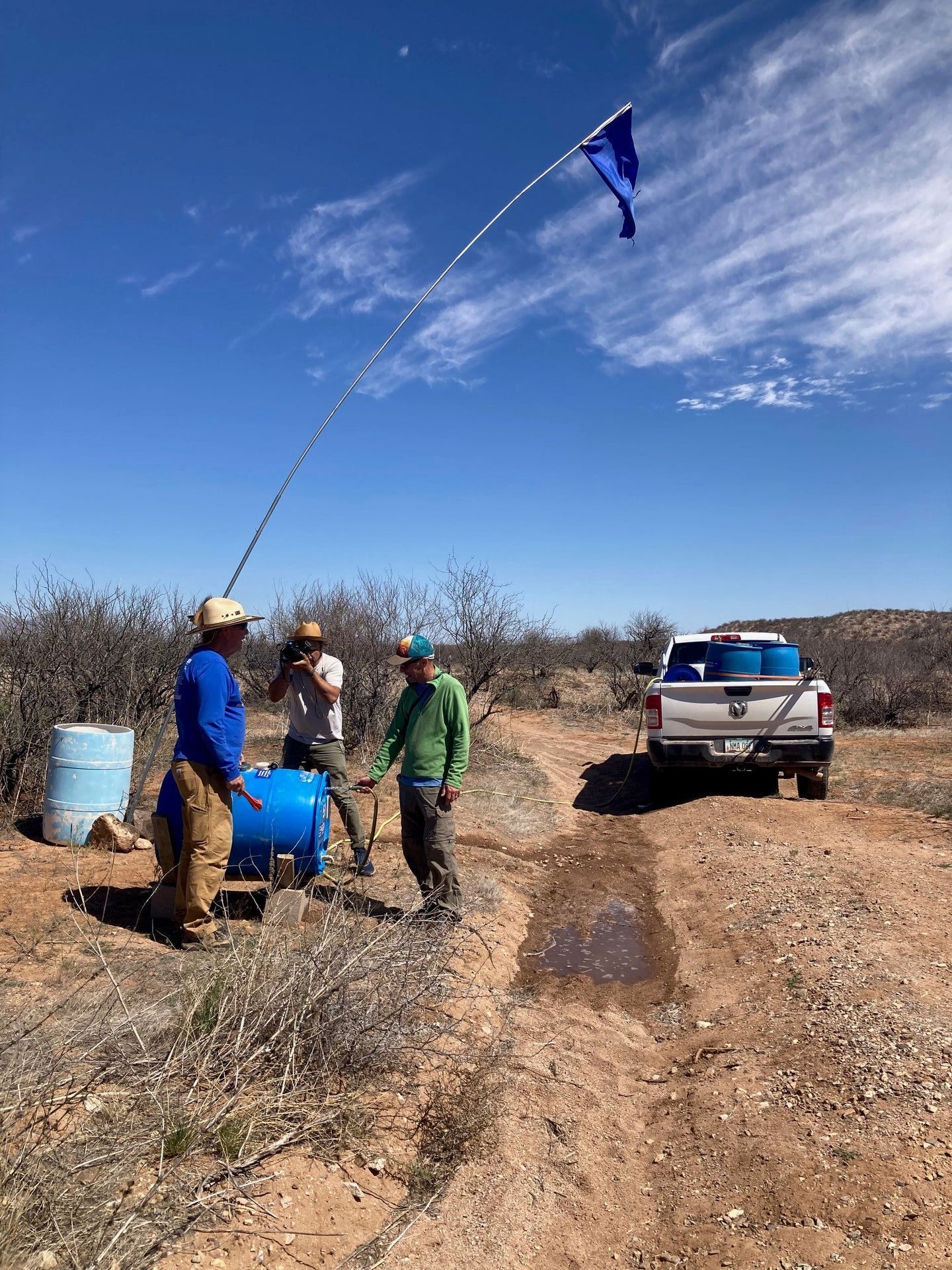
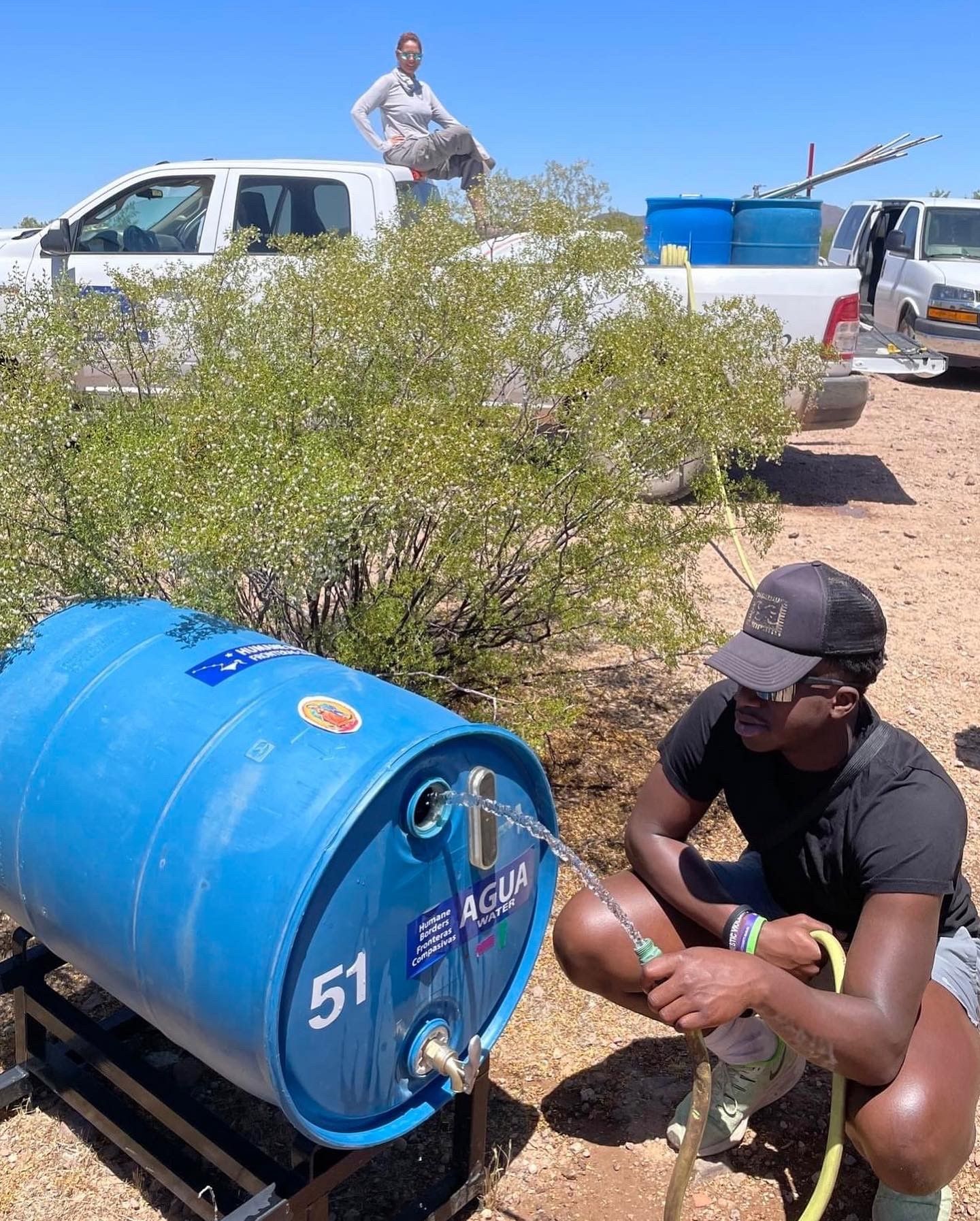
adopt the GUADALUPE station
-
ADOPTED BY ANONYMOUS - THANK YOU!
The Guadalupe water station is in a remote area of the Sonoran Desert northeast of Tucson. While it's owned by the City of Tucson, it's a far cry from the city.
This station is on what we call City of Tucson water run, which can be challenging in the summer after monsoon rains. Vegetation can grow so high it makes route-finding difficult, so our experienced drivers rely on GPS recordings to find their way.
Here, a member of a student group fills the barrel as other students look on. We love our student volunteers!
Adopt the poplar grove station
-
ADOPTED BY KANYA IWANA - THANK YOU!
Poplar Grove, one of the water stations we service on our City of Tucson run, was named by a former volunteer who mistakenly thought that some 30-odd trees on site were poplar trees. In fact, they're eucalyptus trees, but the name stuck. The station is shaded under a small clump of trees in a flat area that was cleared for ranching and farming several decades ago, and where migrants still cross.
A large open area nearby is home to caracara raptors, a large bird of prey belonging to the falcon family. Nearby, on top one of the hills that we drive past, lies a Hohokam village ruins, and volunteers have often discovered pottery shards in the area.
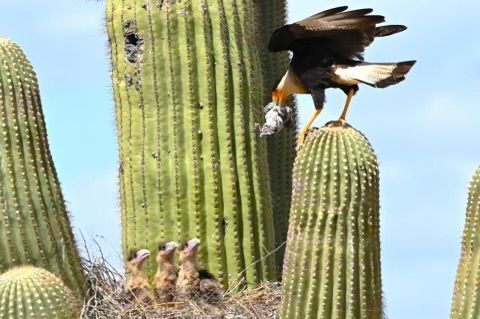
how to adopt a water station
Interested in adopting a Humane Borders water station? Please click the blue "Adopt Now" button below. Put in the "public message of support" that your $1,000 donation is for "ADOPT A STATION." Include which station you want to adopt and check the box if you want the donation to be anonymous. That's it!
Other ways you support our lifesaving work:
$500 - BLUE FLAGS FOREVER
$250 - WATER BEARER
$100 - BUY A BARREL
$50 - GAS BUDDY
~thank you for caring~
©2022 | All Rights Reserved | Humane Borders
Website powered by Neon One
